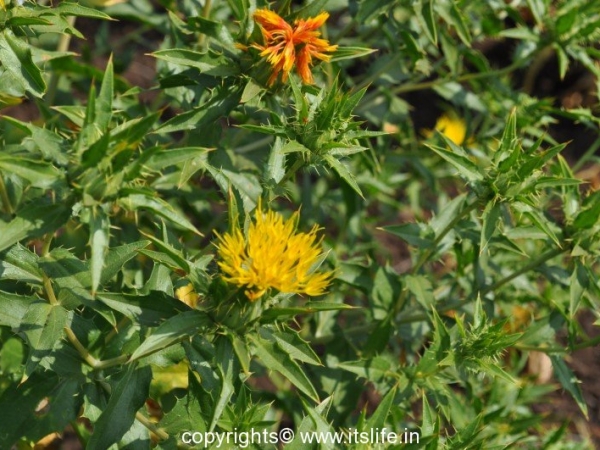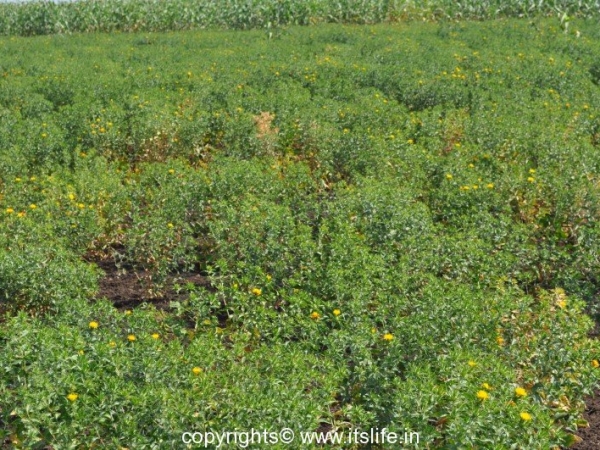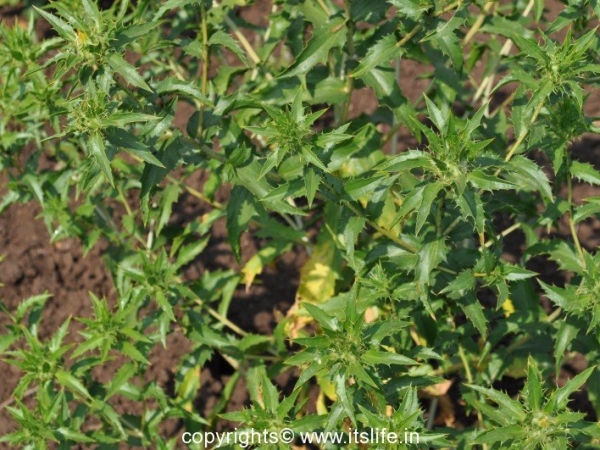Common names of Safflower are Dyers’ saffron, False saffron. In Kannada it is known as Kushubi, in Hindi it is Kusum, in Tamil it is Kusumba. The botanical name is Carthamus tinctorius and belongs to Asteraceae (Sunflower) family.
Safflower is an annual plant and native to the Mediterranean countries. It is one of the oldest crops to be grown and a garland of Safflower found in the tomb of the pharaoh Tutankhamun is testimony to it. It is now grown in most of the countries for the seeds to extract edible and healthy oil.
In North Karnataka, you can see large acres of land growing Safflower. The golden flowers nodding in sunshine is a delight to watch. The patterned leaves with the spines is a good contrast for the delicate flowers.
The thistle like plant grows to a height of 3 feet with many branches. The leaves are green, alternate, oblong, with small spines.
The flowers are yellow, red, or orange. Multiple flowers bloom at the end of each of the branches. In Mexico, the flower is used as a saffron substitute in their cuisine.
The seeds thus procured from this plant is harvested to extract oil.
Yellow and red dyes are made using the flowers. A tea is prepared using the dried petals. Parts of the plant has been used in ancient medicines to treat many ailments.




